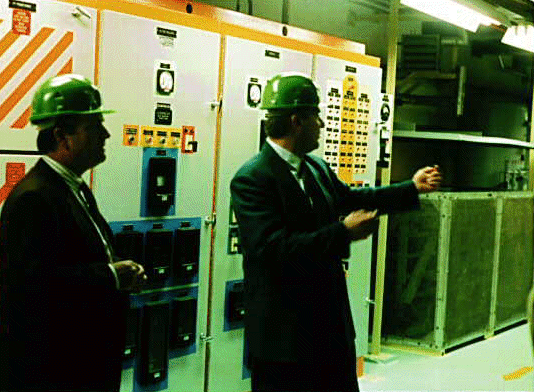Turbine Building - Electrical Switchgear
The large panel below shows a typical electrical switchgear. Gauges
provide the operator such information as voltage and current levels. Controls are often
provided. Panels may be color-coded to alert personnel as to power source for the breakers
or different functions of the equipment.
 Photo
by J.A. Gonyeau |
Breakers typically have relays which will cause the breaker to trip open to prevent
equipment (motor, fan, or pump) damage due to low voltage, high current, or low frequency
conditions. In many power plants, equipment operate at 480 or 600 volts. |
In the United States, the alternating current frequency is 60
cycles per second (Hertz). In most of the rest of the world, 50 cycles per second is used.
The frequency generated depends on the rotating speed of the turbine-generator and the
number of electrical poles of the generator. Thus, in the U.S., turbine-generators rotate
at 1800 or 3600 rpm; in the rest of the world, they rotate at 1500 or 3000 rpm.
Copyright © 1996-2004. Joseph
Gonyeau, P.E.. The Virtual Nuclear
Tourist. All rights reserved. Revised: March 15, 2001.
